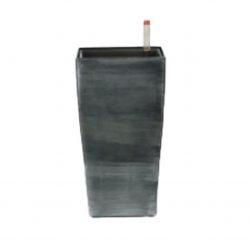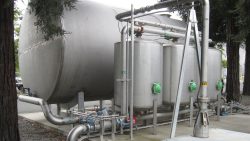Types of plain in india
India’s diverse geography includes several types of plains, each formed by different geological processes. Plains are extensive, flat regions that are often fertile and suitable for agriculture, contributing significantly to the country’s agrarian economy. This article explores the major types of plains found in India.
1. The Indo-Gangetic PlainsFormation and Location
The Indo-Gangetic Plains, also known as the Northern Plains, are the most prominent plains in India. They extend from the Punjab plains in the west to the Assam Valley in the east, encompassing parts of Punjab, Haryana, Delhi, Uttar Pradesh, Bihar, Jharkhand, and West Bengal. These plains are formed by the alluvial deposits brought by the three major rivers: the Indus, the Ganges, and the Brahmaputra, along with their tributaries.
Characteristics
- Alluvial Soil: Rich and fertile, making the plains highly productive for agriculture.
- Topography: Generally flat with a gentle slope towards the east and southeast.
- Climate: Predominantly subtropical, with hot summers and cold winters.
- Agriculture: Major crops include wheat, rice, sugarcane, and pulses.
2. The Coastal PlainsWestern Coastal Plains
Stretching from Gujarat to Kerala, the Western Coastal Plains are narrow and lie between the Western Ghats and the Arabian Sea. They include regions like Konkan, Kannad, and Malabar Coast.
Eastern Coastal Plains
Extending from West Bengal to Tamil Nadu, the Eastern Coastal Plains are wider than their western counterpart and lie between the Eastern Ghats and the Bay of Bengal. Key regions include the Coromandel Coast and the Northern Circars.
Characteristics
- Western Coastal Plains: Known for lagoons and backwaters, such as the famous backwaters of Kerala.
- Eastern Coastal Plains: Characterized by deltas formed by rivers like the Mahanadi, Godavari, Krishna, and Kaveri.
- Soil: Both alluvial and coastal soils, supporting rice, coconut, and cashew cultivation.
3. The Deccan Plateau Plains
While primarily a plateau, the Deccan region also features plains formed by volcanic activity, particularly in the Maharashtra region.
Characteristics
- Black Soil: Known as Regur soil, highly suitable for cotton cultivation.
- Topography: Undulating terrain with occasional flat plains.
- Climate: Tropical with distinct wet and dry seasons.
- Agriculture: Apart from cotton, crops like soybeans, sorghum, and pulses are widely grown.
4. The Terai Plains
Situated at the foothills of the Himalayas, the Terai Plains extend through the states of Uttarakhand, Uttar Pradesh, Bihar, and West Bengal.
Formation and Characteristics
- Formation: Formed by the deposition of coarse alluvium from Himalayan rivers.
- Soil: Fertile and swampy, with dense forests in many areas.
- Climate: Humid and subtropical, with heavy monsoon rains.
- Agriculture: Predominantly rice, sugarcane, and wheat.
5. The Rajasthan PlainsFormation and Location
The Rajasthan Plains, part of the Thar Desert, are located in western India, encompassing most of Rajasthan.
Characteristics
- Topography: Arid and semi-arid, with sandy soils and sparse vegetation.
- Climate: Hot desert climate with extreme temperatures and scanty rainfall.
- Agriculture: Limited due to arid conditions, but where irrigation is available, crops like bajra (pearl millet), wheat, and mustard are grown.
Conclusion
India’s plains are a vital component of its geography and economy, supporting a large proportion of the population through agriculture. Each type of plain, from the alluvial Indo-Gangetic to the arid Rajasthan plains, has unique characteristics and contributions to the country’s agrarian landscape. Understanding these plains is crucial for appreciating India’s rich natural heritage and the regional diversity in agricultural practices.




































































https://239edd300c37.simbla-sites.com/Home
https://www.brandsoftheworld.com/users/hydunitreview
https://www.bakespace.com/members/profile/hydunitreview/1641559/
https://www.startus.cc/resume/697367
https://housing.justlanded.com/en/India_Andhra-Pradesh_Hyderabad/For-Sale_Apartments/the-Prestige-City-Hyderabad-Elevating-the-It-Landscape
https://www.tribalpages.com/tribe/browse?userid=hydunitreview&view=9&randi=718711558&switch=0
https://www.csslight.com/profile/the-prestige-city-hyderabad
https://www.spoj.com/users/hydunitreviews/
https://forum.trictrac.net/u/hydunitreview/summary
https://clairemontreview.ampedpages.com/common-mistakes-to-avoid-in-real-estate-investing-insights-for-prospective-buyers-of-prestige-clairemont-54591636
https://clairemontreview.ampblogs.com/discover-prestige-clairemont-a-prime-residential-venture-in-kokapet-neopolis-63932901
https://clairemontreview.onepage.website/
https://www.kadenze.com/users/prestige-clairemont-review
https://oldgit.herzen.spb.ru/clairemontreview
https://www.wpanet.org/profile/prestigeclairemontplan/profile
https://engage.eiturbanmobility.eu/profiles/clairemontreview
https://inkbunny.net/clairemontreview?
https://hinative.com/profiles/8148655
https://en.wikialpha.org/wiki/User:Sobhacrystalmeadows
https://wpmudev.com/profile/sobhacrystalmeadowsplan/
https://gitlab.xfce.org/manikpawar
https://8tracks.com/sobhacrystalmeadows/collections/sobha-crystal-meadows-review
https://app.pluralsight.com/profile/sobhacrystalmeadows-
https://aetherhub.com/User/sobhacrystalmeadows
https://www.bigbasstabs.com/profile/96169.html
https://eggs.mu/home?en=sobhacrystalmeadows
http://opus61.ddo.jp/blog/item24.html#cf
https://alc.doae.go.th/?p=7256#comment-139283